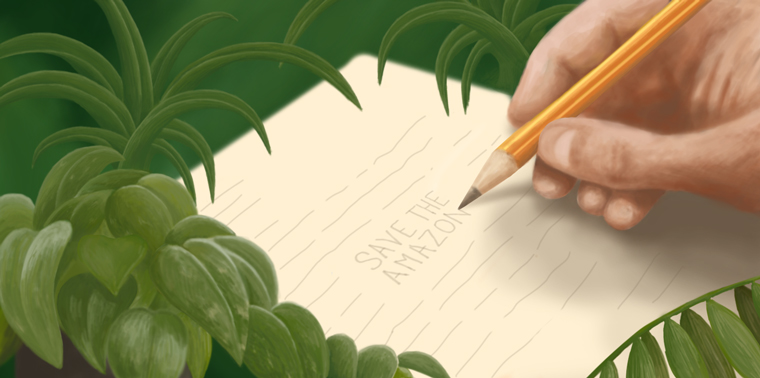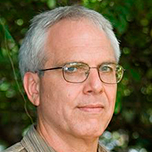February 21, 2018 — The Amazon is the world’s greatest rainforest, stretching like a vast verdant carpet across more than 550 million hectares (1.4 billion acres) of South America.
In addition to comprising some of the biologically richest real estate on the planet, its forests and aquatic ecosystems play crucial roles in storing heat-trapping carbon, emitting trillions of tons per year of water vapor that create clouds and promote rainfall, and driving major atmospheric circulations that underlie vital elements of Earth’s climate. The Amazon plays a fundamental role in sustaining life on Earth, and we all have a strong vested interest in seeing it survive and thrive in the long term.
A growing awareness of this role has brought some conservation progress to the region. At the same time, however, the Amazon is facing a stunning array of threats. Below is the good, the bad, and what you can do about it.
Good News: Big New Park
Peru has just declared an expansive new national park in the Amazon. Yaguas National Park encompasses one of the the biologically richest ecosystems on the planet, and will span about 870,000 hectares (more than 2 million acres) along the Putumayo River in northeastern Peru.
The new park sustains two-thirds of Peru’s freshwater fish species as well as thousands of plants, birds and other fauna.
In addition to protecting nature, the park will benefit indigenous residents by helping to limit illegal logging and gold mining — which threaten their health and livelihoods.
John Terborgh, an ecologist with Duke University who has conducted research in Peru for over a half-century, heralds the good news but says, “Declaring a park is only the first step. The proof of the pudding will be in its implementation [by the government].”
Fingers crossed for this vital new park.
Bad News: Road-building Frenzy
In terms of bad news, one need look only at the incredible spate of ongoing, planned and proposed road projects in Amazonia. If constructed in their entirety, these projects would massively fragment and degrade the world’s largest rainforest.
For example, the massive Manaus-Porto Velho Highway (BR-319) could help chop the Amazon in half.
Beyond this, Peru is funding an avalanche of new roads near its border with Brazil. A recent study suggests these roads, if completed, would lead to the loss of some 275,000 hectares (680,000 acres) of forest.
Potentially worse is a proposed highway between Iquitos and Saramiriza in northern Peru — a project that would cut a massive swath through the Peruvian Amazon, including key protected areas and indigenous reserves.
This proposal is not yet funded, but if it proceeds it would be incredibly dangerous environmentally and socially. Peru’s president, Pedro Pablo Kuczynski, is formally supporting it, although his own ministry of transport does not.
Keep your eyes on the Iquitos-Saramiriza highway — a potential disaster for the Peruvian Amazon.
Good News: Backing Away from Mega-dams
In what could become an earth-shaking precedent, Brazil has just backed away from its intensely controversial policy of building giant hydropower dams in the Amazon Basin.
Such dams not only flood large areas of forest — seriously harming biodiversity, generating major greenhouse-gas emissions and displacing local peoples — but also require networks of new roads for dam construction and maintenance.
By cutting into intact forests, such roads often catalyze sharp increases in forest destruction and degradation — such as fires, illegal mining, poaching and illicit logging.
The Temer government has decided — at least for now — to halt one of the most environmentally dangerous and financially risky policies in the Amazon.The government of Brazilian president Michel Temer has traditionally favored the planned mega-dams. Why the sudden change in policy?
Philip Fearnside, a top Amazon expert with Brazil’s National Institute for Amazonian Research (INPA), suggests the move has been prompted both by resistance from environmental and indigenous groups and by ongoing corruption allegations — particularly those involving hefty government contracts awarded to corporations for dam construction. Brazil’s suffering economy hasn’t helped either.
Whatever the reason, the Temer government has decided — at least for now — to halt one of the most environmentally dangerous and financially risky policies in the Amazon.
Bad News: The Closer You Look …
Scientists have just learned that deforestation rates in the Brazilian Amazon are much higher than was previously thought.
The European Space Agency’s new Sentinel satellites — which have much better spatial resolution than the U.S. Landsat satellites used for the past several decades — are finding much more destroyed or damaged forests on the ground.
With a more accurate picture, it turns out that the Amazon is in considerably worse shape than we thought before. Many forests that were formerly assumed to be intact are actually logged or fragmented.
This is important because degraded forests are particularly vulnerable to fire — as evidenced by large areas of damaged forest that are currently aflame in the Amazon.
Call to Action: What You Can Do
One could list various other worries — a wild government plan to deforest much of Beni Province in Bolivia, or China’s massive railway scheme that would cut right across South America — but the examples above make the point: It’s a crucial time for conservationists to raise their game.
Whatever you do, do something. There’s lots of ways for one person to make a difference. You can send a message to Brazil’s political leaders about the mega-road that will chop the Amazon in half — this link tells you exactly how to do that. Or you can join an organization that is battling to save the Amazon. Our group ALERT provides free news updates each week (sign up at this page). Other advocacy groups, such as the Rainforest Action Network and Amazon Watch, are also doing good work.
Whatever you do, do something. The Amazon is boiling right now, with both good and bad news. How we respond at this critical juncture will determine which will prevail. ![]()
Editor’s note: The views expressed here are those of the author and not necessarily of Ensia. We present them to further discussion around important topics. We encourage you to respond with a comment below, following our commenting guidelines, which can be found on this page. In addition, you might consider submitting a Voices piece of your own. See Ensia’s Contact page for submission guidelines.
Ensia shares solutions-focused stories free of charge through our online magazine and partner media. That means audiences around the world have ready access to stories that can — and do — help them shape a better future. If you value our work, please show your support today.
Yes, I'll support Ensia!
